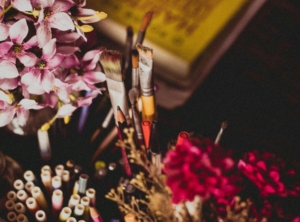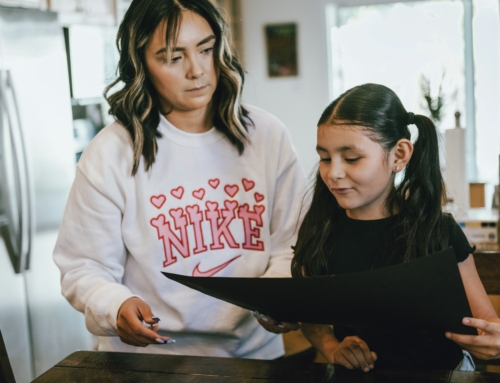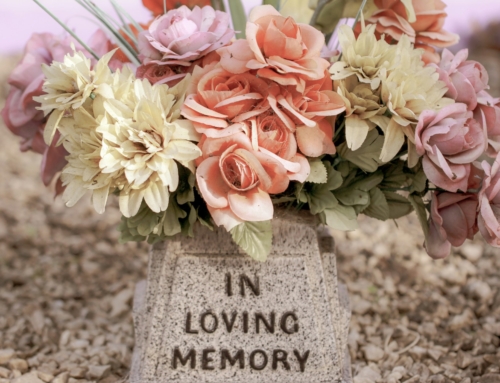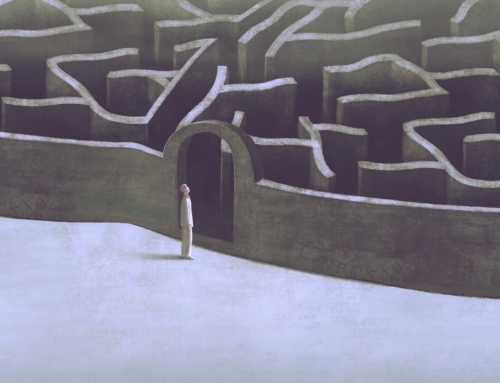Can you find anxiety relief through art?
Megan’s anxiety used to feel trapped within her own body. Anxiety would close in on her causing a racing heartbeat and brain that wouldn’t stop thinking of worst-case scenarios for all the important parts of her life.
She had tried all the usual advice for anxiety relief. Ocean sounds playing in her earbuds only reminded her that she couldn’t afford a vacation, and those lavender essential oils made her sneeze. And that idea of journaling her way to peace ended up being a notebook filled with “things to do” lists and a few rants about her boss.
One day, while scrolling, she stumbled across a video of someone painting thick, haphazard strokes across a canvas and discussing the benefits of art as a coping mechanism for those suffering from anxiety.
Megan scrounged around her house until she found the poster paints, she had used for a school project and stared at a blank piece of cardboard she found in the basement. She closed her eyes and thought about how her anxiety felt and then dipped her brush tentatively into blue paint.
Soon there was a blue heart at the center of the makeshift canvas. “This represents my loneliness,” she thought to herself. Soon she painted the area above the heart in red to indicate the throbbing headache that lurked behind her eyes.
One image and color at a time, the once-ordinary cardboard turned into a masterpiece that spoke more clearly about her anxiety and internal struggles than she had ever been able to express through words. Convinced that art was a new and effective way to help manage her stress, Megan made an appointment with an art therapist to maximize the healing power of art.
Why does art therapy work?
Art therapy works because it taps into the way God designed us. In His perfect plan, God made us to be expressive, creative, and relational beings. From the beginning, God gave us the ability to create, whether through visual arts, music, dance, or even in how we interact with each other.
Creative activities not only connect us to the outside world through a unique form of communication, but they also help us connect to ourselves in ways that words can’t always do. Canvases listen to our problems, much like the blank pages of a journal, without judgment or interruption.
Scientific studies show that even something as simple as drawing for forty-five minutes can lower your cortisol (that relentless stress hormone) levels. Art therapy works because God built us to experience relief through creation to quiet our anxious hearts and find peace.
Professional Art Therapy
Professional art therapists can help their clients find relief from intrusive thoughts, fear, and other mental health issues through guided art techniques. They design projects using their extensive understanding of art mediums and techniques to help their clients work through trauma, face fears, detangle complicated thoughts, reflect on relationships, and support healing.
Art therapy has been established as a mental health technique dating back to the 1940s, yet it’s still not as commonly used as talk and other methods of therapy. There are still some misconceptions about it in mainstream culture that may prevent clients who could benefit from the healing power of creativity from trying art therapy.
You do not have to be a talented artist to cultivate your creative side, as some people may believe. Art therapy isn’t about creating something beautiful to hang above the fireplace. It is about identifying your emotions and trauma and releasing them from your mind and body. Art therapy offers you another form of communication and expression that words alone cannot.
The benefits of creativity aren’t just reserved for children who don’t have the vocabulary to express themselves or those who are already tapped into their creative sides. It is not just for those with brain injuries who have lost their ability to speak or those who are developmentally disabled. Just because you have never created a masterpiece worthy of a gallery wall doesn’t mean that you can’t tap into your creative side through art therapy.
DIY Art Therapy
While you should speak to your therapist about using art to manage stress and anxiety, there are some benefits to doing art as therapy on your own. Here are a few ideas to get you started.
Self-soothing help book
 If you’ve had anxiety for a while, you probably know a few ways that help you feel better in anxious moments. Create a self-soothing book that is unique to you and your mental health journey. The purpose of this book is to become a resource for you in times of stress.
If you’ve had anxiety for a while, you probably know a few ways that help you feel better in anxious moments. Create a self-soothing book that is unique to you and your mental health journey. The purpose of this book is to become a resource for you in times of stress.
Use a blank notebook as your base and cover the front with a fabric that gives you a positive tactile experience such as a piece of fur, sequins, or satin. Search magazines for images that bring you joy such as puppies and flowers and paste those images onto the pages of your notebook.
Fill the rest of the pages with photographs of loved ones, inspirational sayings, scripture verses, breathing exercise instructions, or other soothing methods that have worked for you in the past. Leave some pages blank for future doodling and journaling. Then, when you are feeling anxious, use your self-soothing book as a resource to help you find peace.
Design a “my future” flag
Create a flag that represents your ideal future. Use symbols and words that signify your aspirations and personal goals such as peace of mind or healed relationships. Use colors that make you feel joyful and that signify unity and peace to you. When your flag is completed, hang it in a place that you see often. It will serve as a reminder of the goal you are aspiring to and will show others the direction you want your life to head.
Illustrate Scripture
One way to memorize scripture verses is to translate the words into drawings. Decide on a Scripture verse that brings you peace and focus on the imagery that the words create. Then simply draw or paint the images that your mind has created.
For example, if you find comfort in Psalm 23, you could draw a tranquil green pasture (verse 2) or a tasty feast on a table (verse 5) signifying God’s acceptance of and provision for you.
Draw your ideal safe place
You may not always have access to your favorite safe space or maybe you don’t have one at all. Use your imagination to create your ideal safe place and put it on paper. Maybe you love the ocean and the soft sand beneath your toes. Or maybe your ideal retreat is a quiet room filled with books and a cozy fire. Use this image as a visual reminder of your ideal mental retreat when you want to feel safe and calm.
Sculpt your emotions
Sculpting is a process that not only taps into your emotions and unleashes your creativity, but also gives you a soothing tactile experience. Remember how much you loved playing with colorful clay as a child? Use clay to create symbols of your emotions.
If you’re feeling lonely, form a heart out of clay and let it dry to form natural cracks or run a “crack” through the center. Or sculpt a zigzag line representing the chaotic and unpredictable nature of your anxious thoughts.
Seeking Professional Help
While there are benefits to creating and appreciating art on your own, to fully experience the healing benefits art offers, you may need the guidance and help of a professionally trained therapist. These highly trained specialists can help you identify specific areas of trauma in your life that may be hidden below the surface and tailor creative projects to meet your individual needs.
If you are grappling with anxiety and have tried all the usual tricks and tips for anxiety relief like Megan, tap into your creative self by using art and art expression to identify, communicate, and deal with your anxiety.
“Art Supplies and Flowers”, courtesy of Ella Jardim, Unsplash.com, CC0 License











